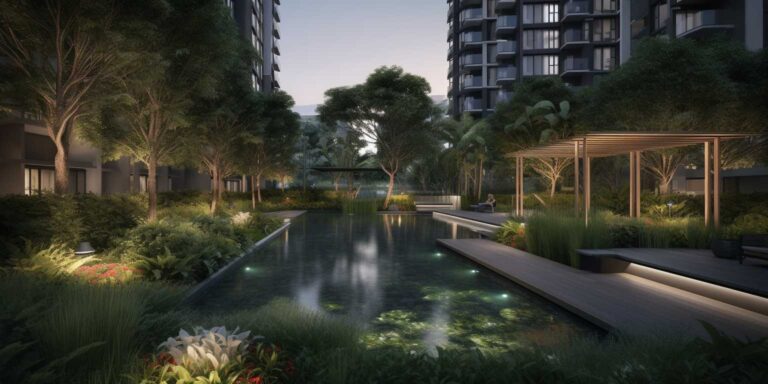
Architectural metal cladding is the perfect example of how form and function can coexist together. Because of its versatility and durability, metal cladding has been the preferred choice for architects and builders worldwide. This trip explores nine captivating metal cladding ideas, all of which push the boundaries of creativity and artistic expression. These works of art, which range from sleek modern facades to richly textured patterns, push the boundaries of what is considered possible and provide insight into how architecture may develop in the future. These designs make striking visual statements in addition to improving the structural integrity of buildings through creative material combinations and state-of-the-art construction methods. Fundamentally, metal siding goes beyond simple functionality and becomes a platform for creative inventiveness and architectural mastery.
1. Minimalist Elegance
Simple, clean lines characterize minimalist metal cladding designs, which are the pinnacle of classic elegance. They value minimalism and subtle refinement, and they are partial to materials like aluminium or stainless steel. The combination of sleek surfaces and delicate textures creates a visually striking effect, which is why minimalist metal cladding is a popular choice for modern buildings that strive for sophisticated aesthetics. Its ageless charm goes beyond fads and gives architectural designs a perpetual charm. These designs, which can be found on private residences or skyscrapers, elegantly combine practicality and style to improve the aesthetic appeal while retaining a feeling of refinement and modernity.
2. Rustic Charm
Rustic metal cladding styles contrast sharply with modern structures, highlighting the beauty of flaws. Corten steel, often known as weathered steel, is frequently used to create an aged, worn look that evokes nostalgia and authenticity. Rustic metal cladding, whether it be used on an urban loft or a farmhouse in the country, lends character and warmth to any space while evoking bygone ages.
3. Futuristic Innovations
Modern nailstrip cladding ideas push the envelope of design by experimenting with novel materials and technologies. These designs, which include interactive features and dynamic graphics, engage the imagination with elements like kinetic panels or LED lighting. Futuristic metal cladding redefines the link between architecture and technology, providing glimpses into the urban landscapes of the future through transformative facades and interactive art pieces.
4. Organic Integration
Organic metal cladding designs are influenced by the shapes and patterns seen in nature, which helps to blur the boundaries between architecture and the environment. These patterns, which combine materials like titanium or perforated aluminium to resemble organic forms like leaves, waves, or clouds, harmoniously blend structure and environment. Organic metal cladding encourages a closer relationship with nature by embracing biomimicry and enhancing biophilic design concepts.
5. Geometric Precision
Exhibiting precise craftsmanship and thorough attention to detail, precision metal cladding designs embrace geometric shapes and mathematical principles. These designs offer a layer of intricacy and visual interest to architectural facades with their elaborate patterns, tessellations, and fractal geometries, using materials like aluminium composite panels or folded metal sheets. Geometric metal cladding demonstrates the beauty of mathematical order in the built world through symmetrical patterns and abstract compositions.
6. Cultural Expressions
Ethnic metal cladding designs like nailstrip cladding highlight diversity and tradition while reflecting local heritage and cultural identity. These designs honour the diverse fabric of human civilization by taking cues from traditional craftsmanship, symbolic iconography, and indigenous motifs. Ethnic metal cladding, whether it be on community centres, museums, or religious buildings, acts as a visible reminder of our common history and cultural heritage, promoting a sense of pride and community within communities.
7. Sustainable Solutions
Sustainable metal cladding designs are leading the way in eco-friendly processes and materials that put resource efficiency and environmental responsibility first. With features like green roofs, photovoltaic panels, and recycled metal, these designs maximize occupant comfort and energy efficiency while minimizing their negative effects on the environment. Sustainable metal cladding is an excellent example of how architectural innovation and sustainable design concepts can work together, as shown in rainwater harvesting systems and passive solar techniques.
8. Industrial Inspiration
Industrial metal cladding designs embrace the raw appearance of industrial landscapes, evoking a realistic and gritty urban feel. These designs honour the industrial, warehouse, and urban infrastructure architecture vernacular by utilizing materials like galvanized steel or corrugated metal. The spirit of urban renewal and adaptive reuse is reflected in the industrial metal cladding that gives contemporary architecture a rough, industrial edge, whether it is used to repurpose industrial facilities or revitalize urban areas.
9. Dynamic Adaptability
Adaptive metal cladding concepts provide architectural expression with flexibility and versatility in response to changing needs and climatic circumstances. With features like moveable panels, modular parts, or responsive facades, these designs may change to meet changing user needs, climatic conditions, and functional requirements. Adaptive metal cladding redefines architectural flexibility by providing dynamic solutions for constantly changing urban contexts, from enhancing daylighting and ventilation to reshaping building skins.
In conclusion,
Metal cladding ideas come in a wide range of styles, from futuristic inventions to minimalist elegance, and they all demonstrate the architects’ limitless inventiveness and ability. These nine innovative concepts, which redefine the possibilities of metal cladding, embrace tradition or push the envelope, influencing both today’s and tomorrow’s architectural landscapes.







